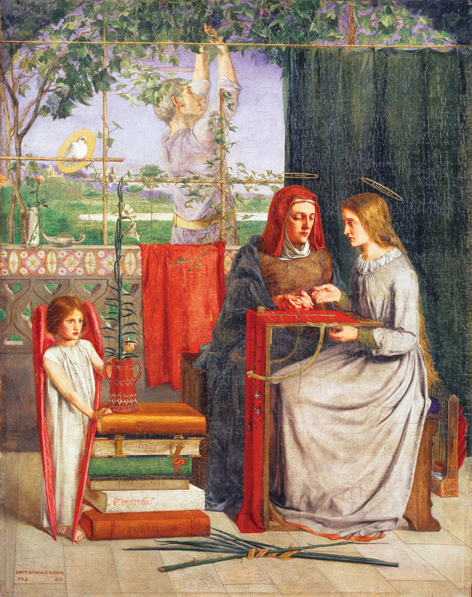Image Details

Tate Gallery, London/Art Resource, NY
Prelude to the Annunciation. Dante Gabriel Rossetti’s painting of an Annunciation about to take place—“Girlhood of Mary, Virgin” (1849)—combines elements from the Infancy Gospel of James with Rossetti’s romantic imagination. Mary (at right) sits with Anna, who watches over her daughter’s needlework. The painting brings together several themes found in the apocryphal gospel: Mary is working on the curtain for the Temple (James 10, 12:1–2) when she is distracted (note her lifted gaze and arrested hands) by a premonition of a divine intrusion. The petite angel (lower left) rests his hands on a pile of books, which emphasizes both the theme of Mary’s conceiving by the Word (James 11:5) as well as her devotion to learning. Anna and the worker in the vineyard seem oblivious to the miracle occurring before them. Only Mary and the angel appear expectant—an emotion not usually represented in art. In this way Rossetti bridges the girlhood of Mary to the moment when she becomes the Mother of the Messiah.
The “Girlhood” was Rossetti’s first painting as a member of the Pre-Raphaelite Brotherhood (note the intitials PRB under the signature, lower left), a group of 19th-century British artists who attempted to infuse what they considered the lost spirituality of the Middle Ages into their work.
